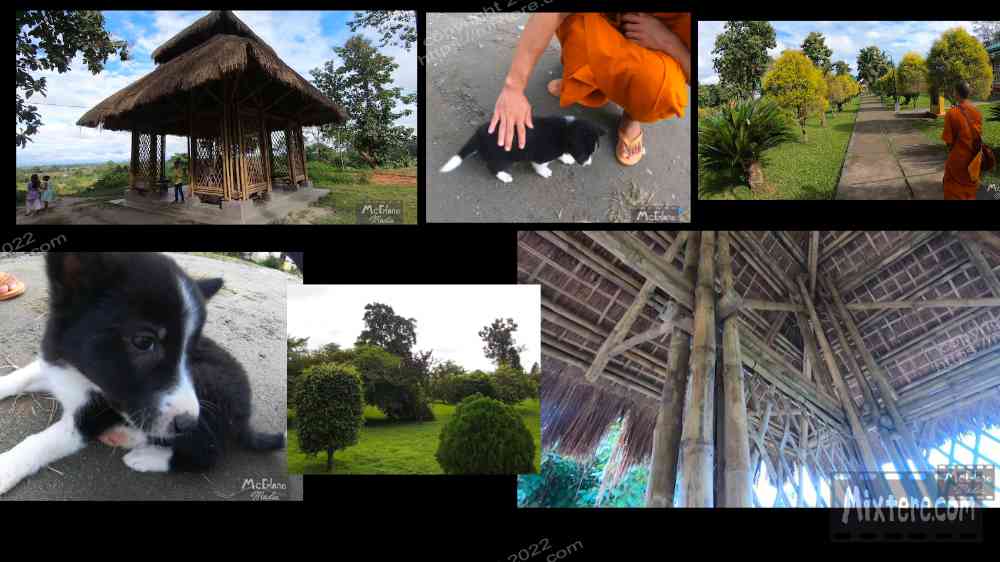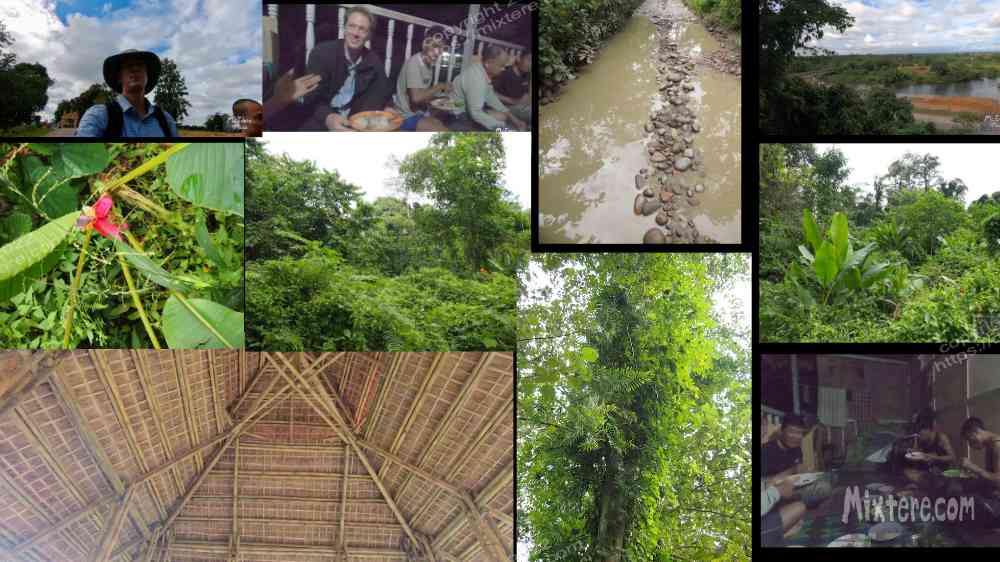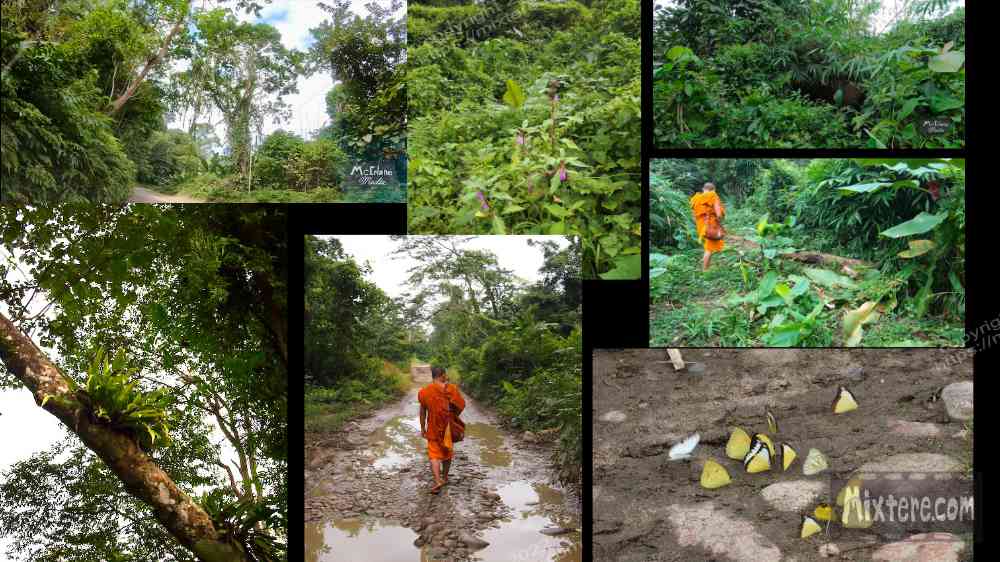
Rajanam, the monk that I had met on the train from Bodh Gaya to Guwahati, had invited me to stay at the Golden Temple in Namsai. I think he was surprised when I took him up on his offer. Namsai is in the lower elevations of eastern Arunachal Pradesh and was on the itinerary that I had approved for my Protected Area Permit. To get there I traveled Northeast from Dibrugarth on a city bus to Tinsukia. I was now far off the tourist trail. US state department employees are prohibited from traveling to Assam and to the more volatile states of the Northeast such as Nagaland and Mizoram. I did some research before heading to the northeast and came to the calculated conclusion that as long as I did not travel so certain areas or do anything stupid, I would probably be fine traveling about the Seven Sisters. I don’t recall the exact places that I learned were best to avoid but I think Mizoram was on the list. Without going into particulars that I don’t really know about, it is safe to say that a good deal of the Northeast has tribes that have...bones to pick with the government. Apparently there had been a bombing in Tinsukia in the not too distant past. I didn’t know about that incident and at the time. At the time Tinsukia was just another hub to pass for further travel. A young man on the bus had been watching out for me since I boarded in Dibrugarth. Immediately upon arriving in Tinsukia he helped secure me a spot in a small van headed out towards Namsai. So it seems it was not a time to be fearful at all.
The van headed out down the jungle road. At one point we stopped at a checkpoint. A chipper official guided me to a guard post where I was to enter some particulars and show my passport and PAP. The official was an exceptionally nice man. In fact, everyone around me was. The people in the van were really nice about having to wait for the foreigner to do his business. I had been feeling some tension about entering the state again (after some sketchiness in Tawang) but after this series of interactions I relaxed into the journey again.
Soon the border crossing was settled and the van shuttled on. The jungle around grew dense and the air more humid. I was enjoying the scenery from the van and zoned out to the constant flow of greenery through the windows. Then it was promptly announced that I had arrived. The van plopped me off on the side of the road and puttered off around the bend. There was silence except for the creatures of the jungle. I tried to reach Rajanam on his cell phone but he didn’t pick up. Where the hell was I? I walked a long driveway up a gradual hill from the road. There was no one in sight and I was a bit nervous. Soon I approached the temple gates and walked through. There was a sort of entry kiosk to the right of the gate. It was more designed for visiting cars to pay for entry I think. I tried to reach Rajanam again on the phone but again... failed. I wandered through the temple complex looking for someone to ask guidance from. Some young boys noticed me and I approached them. They shyly reacted to my presence on the temple grounds. I tried in broken English to explain who I was looking for but English was not helping any here. The boys sensed that I was pretty far out on a limb and went to go see about some help. In the meantime I wandered around the grounds for about fifteen minutes.

It was a strange sort of arrangement. It was a Thai Buddhist temple in the middle of the jungle of Northeast India. Apparently it was built and managed by Thai practitioners, perhaps even subsidized by the Thai government. It seemed strange for such a place to be transplanted in India. But as I wrote earlier, the area had once been the domain of the [Thai] Ahom people and, as I mentioned, the land itself looked and felt like what I remember of Thailand. Perhaps the land still resembles the Ahom culture than it did any Indian one.
The temple grounds were quite sizable. I do not know all that was there but from what I saw there were numerous residential buildings, a dining hall for the monks, a performance hall, temples and monuments, a hostel as well as a nearby hotel with a restaurant. In between all of these were vast spaces of lawn, garden, fruit trees and paths between buildings and monuments. In the center of the property was the covered theater where people were practicing a traditional Thai dance routine to music. Teachers there were meticulously attending to their students, correcting their movements and starting the song over again for a fresh start. I can still hear it!
About twenty minutes after my arrival Rajanam arrived. He had been caught up in some official duties and had missed my calls. It was a relief to see him. I think he was surprised that I had actually arrived as Namsai as it is pretty far off the beaten track. There were a few hours of uncertainty as we waited for official direction from the temple management regarding if I was to be allowed to stay and if so where. During that time I hung out at Rajanam and a fellow monk’s little dorm and then we went to what I think was the temple library. There were a lot of young monks, boys really, lingering in the library. It seemed that part of Rajanam’s duty was to watch over them. The group was kind and deferential to me but there was really no way to communicate much with each other. We spoke a bit using hand gestures and kept to few words. It is ironic that my journey into the jungle led to again, spending time at the library. There were a good deal of books, Buddhist and educational texts stacked throughout the bookcases. I perused these while we waited.
It was a little awkward as communication was limited and Rajanam and I didn’t know each other very well. Eventually it came down from the Bhante that I was welcome to stay at the tourist hostel within the compound. Rajanam and I then walked a good distance through the grounds, veering off the path and weaving through trees until we eventually reached the hostel. It was a simple affair; a large rectangular room with about a dozen beds in it. Sounds of insects and birdsong filtered in through the windows. I chose a bed and set my things down. There was one other person staying at the hostel, a Thai photographer that was there as part of an official press engagement at the temple. We exchange pleasantries in broken English and then he hopped out to attend to his photographic duties.
I was a bit tired from the journey and so spent the rest of the afternoon resting up. I had said that I was excited to see the surrounding jungle so Rajanam promised me a walking tour there in the next day or so. That evening I returned to hang out with Rajanam at his dorm and a group of Thai construction workers next door chatted me up. They were in Namsai to erect a series of buildings on the grounds. They were a friendly and welcoming group. It had been thirty years since I had been to Thailand but the group’s kindness jogged memories of my visit there. People had been friendly and welcoming back then too. In general I was struck by the softness of the Thais when compared with the Indians. When I say that, I am referring to the North and South Indians that I feel that I know. The Northeastern Indians and the many cultures involved there are still pretty mysterious to me. Anyway, the Thai workers came across as quiet, patient and gentle. The group invited me to join them for dinner right there on their dorm porch. I of course accepted. We sat cross-legged and ate rice and vegetables off of banana leaves. The Thais were eating raw leaves that looked like basil and despite how tasty it looked I chose to refuse these in order to prevent from possibly having health problems from the uncooked vegetables and the water they were washed in. The most outgoing of the group kept insisting that I try it but I tried to tell him that I could not. He did not understand but again, I had to make the call of being smart or being polite. I chose the former. No major offense was caused.

I shot a little video of the meal there on the porch. I am a bit of a chameleon, quickly picking up on the way locals speak and behave in the place I find myself. This is probably a remnant from my childhood, where looking to fit in was often a concern. The reason I mention this is that during the video I can be heard speaking in a strange tone that is not my own. I think this was a mix of altering my voice to be heard better as well as enunciating with the broken English used in the area and most likely to be understood. It's weird, I ended up sounding like Kermit the frog. Still, it’s a bizarre but good-hearted little video that gives you a sense of the Thais’ good cheer.
Rajanam gave me a little tour of the grounds the next day. We went around the footpaths and then to an impressive bamboo structure along an overlook of the Tengapani river. We also ventured down to the river to look around a bit. Later that evening I went to the hotel restaurant and ordered some rice and dal and a plain soda, my go to beverage in India. It wasn’t exactly comfortable. One of the worst things about traveling solo is dining alone among other groups. What applies here is the saying “You’re never so alone as in a crowd.” I would so much rather prepare my own food than to sit alone in a restaurant to "be served." There were only a few other guests dining at the restaurant, all Indian or Thai groups and no other foreigners. I ate my food as soon as it was served and soon made myself scarce. That night I lay awake to the sounds of the jungle creatures... and the snoring of the Thai photographer.
The next Day Rajanam found time to take me on a jungle walk. We walked along the road for a while and then delved into the jungle on a muddy track. I learned about Rajanam and the area along the way. He was from a tribal village and had only recently been a monk at the Golden Temple. He was about twenty five years old I think. I will withhold the more personal things he shared with me. He told me how so many tribal folk really yearned for development, basic education, health care and the modern conveniences and way of life in developed countries. Having had access to all those things but finding the [American] consumer culture lacking in heart and cultural roots, I simply could not relate to what he was saying. Other Indians, especially those in the Northeast, also pined for Western development and conveniences. Although I have no idea what it is like to grow up in tribal camps in the jungle, I knew the pattern that was likely to unfold and did not feel good about it.
What would happen in time is that select individuals would become enriched while all others remained poor while development happened. And through the indoctrination into more western business and consumer models, any culture’s former grounding in the land and traditional ways and language would eventually disappear. I saw myself as an example of this, a 4th generation Californian with genes from England, Ireland, Poland, Germany and Scandinavia. Through the generations any traces of my ancestral roots and history were lost. With the exception of traveling as a tourist in London briefly, I had never even set foot in my ancestral lands. I do not even know them or their cultures. What I know is American consumer and pop culture- brought up by magazines, television, advertisements, movies, sports, video games and fast food chains. I see this as a sad state of affairs and do not wish this on others.
Rajanam and I delved deeper into the jungle. The air thickened and the chorus of birds and insects intensified. Despite the fact that we were in what was supposed to be a protected tract of land, we passed what was obviously a logging truck loaded with timber, parked on the side of the road. It seemed that in the struggle to make ends meet some locals were pilfering their own forest. Later on we encountered an elephant and handler taking a break in the trees. The elephant was deep in a thicket of bamboo, snapping the stalks with ease to get at the tasty hearts within. We proceeded forward a bit to try to get a better glimpse of the elephant. I heard it more than saw it. Sadly, what I heard was the clanging of its chains as it rustled among the bamboo. My heart sank. I sent a prayer out to that poor elephant, most likely grabbed as a youngster and twisted into believing it was powerless by the cruel elephant handler. But mouths needed to be fed and I would not know how to make a buck in Namsai. The world is complex. I could relate to that elephant and to those chains. In a way I was where I was, and where I am, are attempts to free myself. I wish there was something that I could do for the elephant but I could not think of anything...other than prayer and to make sure I did not opt for any elephant rides or shady “elephant rescue” organizations that dot Asia. As Rajanam and I neared the elephant's bamboo patch it became clear that we were disturbing it. I figured the best thing I could do was to leave it to its break of bamboo hearts. My heart still aches for that creature and I often think of him/her and wish it well. I encourage you to consider skipping any circus or elephant ride or for-profit elephant orphanage. Exploitation of animals is extremely cruel and you never know… the next time around you might be that elephant.
Shortly after the encounter we turned around and headed back. Conversation had dwindled to only the occasional word. When we got out of the mud I stopped to take off my soaking shoes and wring my socks out. “Leech, Leech!” Declared Rajanam with urgency, pointing at my ankles. Sure enough about three or four leeches the size of a black bean had attached to my ankles. I panicked and tried to scrape them off. My technique was probably not proper but they were so disgusting I wanted them off me that instant. I didn’t like the sight of open bleeding wounds on my ankles there in the tropics. I went back to the hostel and broke out my first aid kit to clean things up. I was probably lucky and didn’t get any infections from the wounds. They healed up in a week or so. In all Namsai was a beautiful and wild place.



